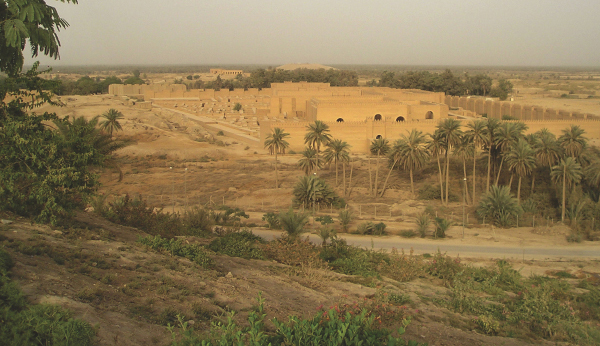
Author
Some prophetic books open with identifications and even dates (e.g., Jer 1:1–3), but Habakkuk says merely that he is a prophet (1:1). A prophet’s function included (1) analyzing the shape of evil in a society (1:2–4; 2:6–19; Mic 2:1–2; 3:1–4); (2) proclaiming God’s message for the present and sometimes for the future (1:5–11; Isa 1:27–31; 2:1–4); and (3) interceding for God’s people (3:2; 1 Sam 12:23; Amos 7:1–6). Habakkuk has social sensitivities. He is direct and forthright in his dialogue with God, but he also listens (2:1; 3:16). His contemporaries included Jeremiah, Zephaniah, Daniel, and possibly Ezekiel.
Date
Habakkuk, who ministered in Judah, witnessed a shift in the balance of international powers. The Assyrians, who dominated the Holy Land in the eighth and seventh centuries BC, were defeated with the overthrow of their capital Nineveh by the Babylonians (612 BC). The Babylonians then marched westward, defeating Egypt in the battle of Carchemish (605 BC) at the Euphrates River. Under the command of King Nebuchadnezzar, the Babylonians, now moving southward, threatened the lands of Syria, Israel, and Edom. The Babylonians attacked Judah in 605, 597, and 586 BC.
Given his prediction of the approaching Babylonian invasion (1:6), Habakkuk likely lived toward the end of Josiah’s reign (641/40–609 BC) and the beginning of Jehoiakim’s rule (609–598). An approximate date for his book is 612–605 BC.
Message and Themes
The book opens with questions: Why is God silent, allowing gross evil to increase within a society? Why would God use an evil nation, Babylon, to punish Judah, which is presumably less evil? As an answer to such questions, the message of the book is that God will do what is just and right. Sooner or later, God will hold evil nations and individuals to account (chs. 1–2). God, who is mighty in power (3:1–15), is nevertheless merciful and attentive to a person’s cry for answers. Believers live by steadfast trust in God. They embrace God’s ways and so are enabled to move from lament to song. The prophet, initially perplexed and frustrated, in the end exults, ready to press on with confidence.
The book touches on themes of unrighteousness, spiritual struggle, national consciousness, God’s ways in the world, trust, personal lament, and cosmic victory. The book of Job wrestles with similar questions, though on a personal rather than a national scale. In ch. 3 God’s glory in creation and in history informs prayer and worship (cf. Ps 136). The key verses, 2:4–5, are referenced in the NT three times (Rom 1:17; Gal 3:11; Heb 10:38–39).
Literary Features
The book, cast in poetry, reports a dialogue with God and ends with a prayer, part of which is a description of God’s appearing (a theophany). The dialogue consists of two sets of questions (1:1–4; 1:12—2:1), each answered by a divine response (1:5–11; 2:2–20). God’s activity is described in chs. 1–2; more vivid and heightened descriptions of God’s action and person are given in ch. 3. The book, akin to a spiritual journal, ends with a personal testimony (3:16–19).
Outline
I. Heading (1:1)
II. Habakkuk’s First Complaint (1:2–4)
III. The Lord’s Answer (1:5–11)
IV. Habakkuk’s Second Complaint (1:12—2:1)
V. The Lord’s Answer (2:2–20)
A. Instructions for Living (2:2–5)
B. Taunt Songs (2:6–20)
VI. Habakkuk’s Prayer (3:1–19)
A. Heading (3:1)
B. Adoration and Petition (3:2)
C. Report of God’s Coming (Theophany) (3:3–15)
D. The Prophet’s Response of Confidence and Joy (3:16–19)
![]()
![]()
